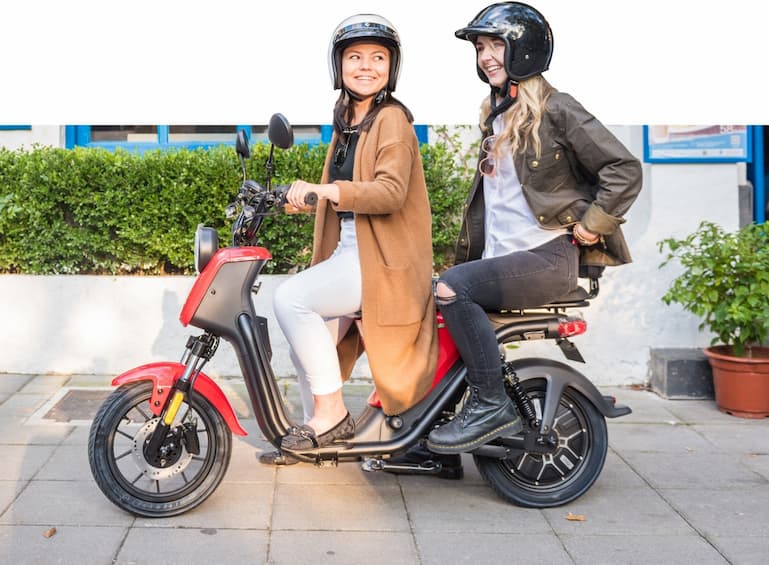People want alternative ways of getting around Dublin City and the surrounding areas. Whether it be to go shopping or just to visit somewhere like the Phoenix Park, cars, buses the Dart and the Luas are less appealing in a world going through Covid-19. So what alternative modes of transport are there for people trying to get around Dublin?
Why Do We Need Public Transport Alternatives?
The Covid-19 restrictions are starting to lift. It should be good news, but they lifted before plans for transport solutions in Dublin City were announced. To me, that was a bit of a grenade rolled across the city. Certain people could go back to work, but how would they get there?
I’m sure that there’ll be a time where Dublin Bus is jammed again. So jammed that it flies past me at the stop, refusing to pick anyone up. While I believe this, I also believe this is years away. From my apartment, I can see the top deck of Dublin Buses. Their capacity has been slashed due to social distancing measures. Even if we were to reduce these measures, the public do not want to share small spaces. Even if wearing masks as per government advice, bus services, rail services and other public transit solutions involve people being close together.
Public Transport Alternatives
With this in mind, people have started to look for alternatives to public transport. It’s the summer, so personal transportation, that isn’t a car, is a real option for city workers and dwellers. I hope some of this applied to beyond the pale, but it’s where I’m living right now so I’ll just use this example. So, if what are your alternatives to public transport in a city like Dublin?
Cycling
Cycling is the most obvious and most popular alternative to public transport in Dublin. I’ve been fantastically shocked by the number of people cycling in the city. I even saw a couple brave enough to take their tandem bike out in the city. Others have gone all-in on cycling and are proving that doing a weekly shop is no problem at all if you have a cargo bike.

Car usage in Dublin City is set to drop by 30% and Green Party leader, Eamon Ryan, believes that cycling usage could increase ten-fold if encouraged.
Around the city, cycling infrastructure has been hurriedly put into place by Dublin City Council. Plans have been fast-tracked and further ambitious plans to encourage cycling in the city have been tabled. The city is so much better right now that even me and my partner took bikes out for a spin together for the first time. We’ve been living here for nearly seven years, and now is the first time it’s felt safe enough.
As restrictions lift, cars have begun to return to the roads and some old habits are proving to die hard. Fingers crossed cycling sees a longterm win in the city.
But if you want to cycle, what are your options?
Buying A Bike
One retail space that’s largely survived Covid-19 restrictions are bike shops. The reason for this is that most are also repair shops that continued to operate on appointments. discovered a great tweet yesterday. The best time to buy a bike was three months ago. The second best time is now.
The best time to buy a bike was three months ago. The second best time is now
The first thing you need to look up is whether your employer offers the Bike to Work scheme or not. This is a government scheme which lets your employer help you buy a bike and related equipment worth up to €1000. You can use what’s known as a salary sacrifice arrangement to save up to 51% on the price of a bike and safety equipment like a lock or helmet. If your employer offers this scheme, you should get a quote from your local bike shop.
If your employer doesn’t offer this, you’re best to visit your local bike shop and have a chat about your needs with them. Try support a local bike shop instead of a big chain like Halfords. Reason being, your local shop will give you some amazing advice and also be there when you need help in a few months.
Not into buying a bike?
Bike Share Schemes
I don’t own a bike in Dublin. Instead, I use bike share schemes. There are two traditional bike-sharing systems. One is Just Eat sponsored Dublin Bikes. These operate from stations around the city where you can rent your bike from.
Dublin Bikes can be linked to your Leap Card which makes rental pretty straight forward. Google Maps now also shows you how many bikes are at each station which makes it nice and easy to plan your journey.
There’s also another service called BleeperBikes. These are a dockless bike-share system. That means you can find them and park them in designated areas in the city. The benefit is that you could park one outside your gaff. The downside is someone will probably rent that before you need it again!
To unlock your BleeperBike, you need to scan a QR code using the BleeperBike app. It’s more expensive than Dublin Bikes so I’ve found having both memberships beneficial. Dublin Bikes for when I can plan a little more or BleeperBike for when I need convenience or am cycling from somewhere not services by Dublin Bikes.
Obviously, the thoughts of using a bike share system right now won’t appeal to everyone. Crews from both Dublin Bikes and BleeperBikes are giving the fleet regular wipe downs, but do carry wipes. I give my bike a full wipe down and sanitise my hands afterwards before heading off on my journey.
Electric Bikes Or E-bikes
The electric bicycle has been a long-standing concept, but they’ve hit the big time in recent years. E-bikes bring the best of both worlds to you as a commuter. You still get exercise in the open air, but it doesn’t take as much effort or time when you have an e-bike. This is all down to the fact that electric bikes have a motor built in to assist you in getting from A to B. With the assistance of an electric motor supporting you you’re also likely to cycle long distances.

E-bikes are not like an electric scooter, Vespa or motorbike. The main reason being that they are classified as pedal-assisted vehicles and not mechanically propelled vehicles. The official title they are given is pedelec. This means they do not need tax or insurance. You do not need a driving licence and they do qualify for the government Bike to Work scheme too. The benefit is that you get to feel all superhuman. Acceleration is really quick and you might get to a top speed that you wouldn’t normally. They are a hybrid of man and machine and you will still feel that you’re exercising. Just getting up that hill won’t be as hard. They come in a range of body types, from electric mountain bikes to fat wheel bikes.
Because of the on-board technology and battery production costs, they are more expensive than the average bike. This means more upfront cost and that it’s advised to plough some additional cash into your lock.
Moby Move: E-bike Sharing
Moby Move secured a licence to operate a similar service to BleeperBike late in 2019. They were planning the final touches to their service when they realised they needed to launch early. The reason being frontline staff needed to get to work and, in some cases, were taking three buses to get there.
Moby Move is almost identical to BleeperBike except that these aren’t normal bikes. They’re ebikes. While the network is quite small now, this is one of the most innovative public transport alternatives in Dublin. You can enjoy getting from A to B without the full effort of cycling while also not having to fork out the cash for an ebike.
This is going to be one of the most exciting ways to get around Dublin for the rest of 2020 and into 2021.
Electric Mopeds
Another growing trend, particularly in markets outside of Ireland is electric mopeds. These are Vespa style scooters. The popularity of these on mainland Europe cannot be ignored and they are also available in countries like Germany under a moped share system. You unlock your moped using your phone, retreive the helmet from under your seat and pay for as much time as you use.

In Ireland, there are no share systems in place yet, but private ownership has increased in recent years. I recently spoke with Shane Mullarkey from Lion Mobility and their plans for Ireland. Lion Mobility are bringing the very popular NIU electric mopeds to Ireland.
These mopeds are amazing and can either be charged at a designated point or you can eject the batteries and charge them at home. The range varies depending on the model, but if you were to be looking to navigate through Dublin City, their entry-level model would have plenty of range to meet your needs.
The massive challenge these mopeds face is the licence required to drive one. Despite being relatively small motors and offering a fantastic alternative to those who need to cover more ground in Dublin, you must have an AM class drivers licence to ride an electric moped. This was automatically included with all driver’s licences until 2006. Now you must undergo an AM theory test and 16-hours of motorbike level training. The team at Lion are hopeful that the benefits of electric mopeds will soon been seen in a city desperately seeking out congested public transport alternatives.
E-rides: Electric Personal Micromobility
And this is the controversial one. Arguably, e-rides hold the greatest potential to take people off of overcrowded public transport. E-rides include electric scooters, Segways, hoverboards, u-wheels, powered mini scooters (go-peds), and powered unicycle. All of these vehicles are classified as MPVs in Ireland but cannot be insured or taxed. As such, the Department of Transport and An Garda Síochána have interpreted the law to rule these vehicles as illegal on Irish roads. And they meant it too. Earlier this year, I spoke with an electric scooter rider who was stopped by Gardaí. He ended up in court with five penalty points and a €300 fine for driving uninsured. He was treated as if he were driving a car without insurance.
Today, you’ll still see plenty of these vehicles on the road, particularly electric scooters which have proven very popular in cities like Dublin. Lifting restrictions in the UK has seen micromobility trials fast-tracked to June 2020, meaning electric scooters will be legal on the road a year earlier than planned. Unfortunately, plans in Ireland have been delayed because of delays to government formation. I’m sure these will be a popular choice once legalised considering how many people seem to be aware of the illegality but continue to use them. Their biggest adversary is not having a government and some commonly held misconceptions about some vehicles like electric scooters.
Testing An E-Bike In Dublin
Alternate Transport Frequently Asked Questions
To become a member of Dublin Bikes costs €25 for the year. After that, your first half an hour is free. Up to one hour is charged at 50c, up to two hours is €1.50, up to 3 hours is €3.50, up to 4 hours is €6.50 and every half hour afterwards is charged at €2. The system is designed to be most beneficial for those cycling from station A directly to station. However you can lock your bike freely using the onboard lock and key.
BleeperBike offer a variety of plans starting from their pay as you go plan. This is €1 per ride and requires a €4 top-up. Each ride is 60 minutes. You can also buy a one month membership for €12.50, three months for €25 or an annual pass for €75. Each of these plans gives you four rides of up to 60 minutes every day for 30 days. Finally, there is also a day pass available for €5.
Bike to Work or Cycle to Work is a government scheme which offers a tax incentive to PAYE employees to cycle to and from work. This scheme started in 2009 and is organised with help from your employer if they have decided to take part.
The Bike to Work scheme is optional for employers. If you’re not sure whether or not this is available, it’s best speak with your HR team. If you’re self-employed, you cannot avail of Bike to Work.
The scheme applies to bikes and equipment up to the value of €1000. It’s important to note you can only use this scheme every five years.
You can buy, new bikes and tricycles, new electric bikes (electrically-assisted bikes that require some effort to propel), cycle helmets, bells and horns, lights (including dynamo packs), mirrors, mudguards and skirt guards, cycle clips, panniers, luggage carriers and straps, locks and chains, pumps, puncture repair kits and cycle tool kits, peflective clothing and bike reflectors.
Yes, you can spend more than the €1000 limit on the Bike to Work scheme. It’s important to note that any amount above €1000 will be treated as a benefit-in-kind income tax charge.
Afraid not. The Bike to Work scheme can only be used by an individual once every five years.
Most e-bikes have a motor which assists you as you pedal. When you stop, the motor stops assisting.
E-bikes can go as fast as you can pedal. The motors will generally assist you up to 45 kmph.
Yes you can. However, if the e-bike costs over €1000, everything over €1000 will be treated as a benefit-in-kind income tax charge.
Yes. The assistance element of the e-bikes still need you to pedal the bike. This actually means you’re likely to cycle further distances and may even exercise more than a normal bike.
The most expensive parts of e-bikes are the motor and the battery. These don’t feature on traditional bikes and do drive the cost up considerably.
Yes. In 2019 the Minister for Transport opened a report into electric scooter and other electric micromobility vehicles. E-bikes were mentioned specifically to be outside of that report because they were not considered to be MPVs (mechanically propelled vehicles) due to the requirement for the user to constantly pedal the bike.
No. Because you must pedal to activate the motor assistance, e-bikes are not MPVs.
Do you know what a Vespa is? Slap an electric motor on that and it’s an electric moped.
Yes. These are MPVs and required a licence, insurance and road tax. You can expect them all to be lower given the environmental friendliness and lower power ratings.
Unfortunately, for the time being, yes. We believe this is on the table to be reviewed once a government is formed. However, now you must hold an AM category licence or undergoing training to acquire one.
Electric scooters, also referred to as kick scooters, are legal to own and operate on private land. You cannot use these on public roads. Check out what we’ve written about this in the past.


